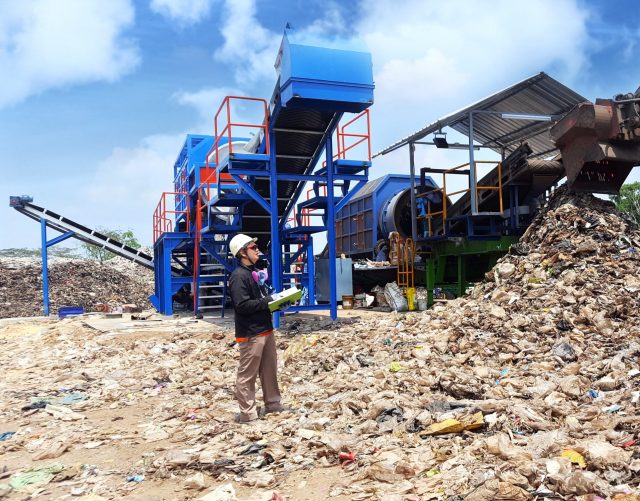This is part two of a three part series. Click here to read part one.
Stopping plastic waste leakage from landfills is necessary to prevent more plastics from entering the ocean. Especially in rural parts of Southeast Asia where natural disasters like floods see waste from landfills enter local water sources. These water sources feed into oceans where it joins the 12.8 million metric tonnes of plastic already polluting the waters.
The good news is that there is a way to recover some of the plastic currently settled in Southeast Asian landfills. Not only can it be removed, but this material may have some value after all.
Landfills are rich in refuse-derived fuel (RFD). Waste, such as plastic, and other materials can be used as fuels in a cement kiln providing they meet certain specifications. In most cases, these materials need to be pre-processed before use to ensure effectiveness. After that, it is then fed to the cement kiln where it is used to help generate the extreme temperatures, greater than 1800 degrees Celsius, required.
Before starting the process of RDF plastic extraction at landfills in Thailand, the municipality or landfill owner must give approval. Once that has been achieved, a mobile waste separator moves in to begin the process of waste segregation.
A crew armed with an excavator, wind shifters, shredders and other equipment are tasked with the job. A clear area is needed and a steady surface must be created, two things not always readily available at most landfills. Safety is of paramount importance with the right equipment used and the highest standards being met.
“Of course, this is not a fun job. Landfills are difficult places to work in. It smells and there is quite a bit of discomfort,” Dr. Vincent Aloysius, CEO at INSEE Ecocycle, states. “That being said, the teams who do undertake this task relish the challenge. They are pumped up about it actually. It’s fantastic to see. They believe they are doing something good and their work effort to maintain the operation is amazing. You will never see people this excited to be at a landfill.”
So what are these excited folks looking for? Plastics. And not the big pieces you’d expect. Little scraps of plastic that have been soiled are mined for. The process is complicated since various types of plastics have co-mingled with unusable materials. And as you would expect at a landfill, everything is soiled.
“In order to find these materials, an area of the landfill is essentially mined in the same way gold or other minerals are discovered. The shifters and shredders go through the waste uncovering the bits of plastic that can be collected,” Dr. Aloysius explains. “This is then sent to an INSEEE Ecocycle facility for furthering polishing where it finally becomes a useable RDF.”
Roughly 10,000 tonnes of RDF plastic waste is extracted and processed by INSEE Ecocycle on its own while additional waste is sourced from landfills operators across Thailand each month. This may not seem like a lot, but by finding and extracting it, you remove the possibility it can ever enter the ocean.
“There is so much plastic out there that we are hardly scratching the surface. We want to stop the leakage of plastic waste and by mining for RFD in landfills, you’re removing a source of this,” Dr. Aloysius points out.
Even with these efforts, it may be some time before all recoverable plastics in landfills are removed. In part three of our series on ocean plastics, we conclude with a look at the future of plastic waste leakage including what more can be done to stop it from reaching the ocean.


































